Work at height hazards are a significant concern in professions like construction, maintenance, and utilities. When tasks take place several feet above the ground, the potential for severe accidents and injuries increases. It’s essential to recognize and address these risks to ensure a safe workspace.
In this article, we’ll delve into 10 typical dangers linked with working at elevated levels and offer hands-on solutions to minimize these threats. These dangers span from the all-too-common falls from heights, which are among the top reasons for work-related deaths, to challenges like unstable platforms, unpredictable weather, and incorrect equipment usage.
Working at Height Hazards and Control Measures
Working at heights can introduce numerous risks; therefore, it is important to identify hazards and implement appropriate control measures. Here are ten common hazards related to working at heights, along with suggested control measures:
1. Falls from Heights

Falls from heights are among the most common causes of fatalities and serious workplace injuries, particularly in the construction, utilities, and industrial sectors. It’s important to note that “height” doesn’t necessarily mean hundreds of feet above ground. A fall from a relatively low elevation, such as a ladder or a rooftop, can still result in serious injuries.
The circumstances of falls can vary widely but can include situations such as falling through fragile surfaces, falling off ladders, scaffolding, roofs, or other elevated work platforms and areas, and falling into holes or service shafts. Each scenario might need different prevention methods.
Control Measures
Effective control measures should aim at preventing the fall from occurring in the first place. Here are some ways to achieve that:
- Guardrails: Guardrails provide a physical barrier that prevents workers from falling. They are commonly used around the perimeter of roofs, platforms, and near any edge that presents a fall hazard. OSHA standards specify the required height and strength of guardrails to ensure effective protection.
- Safety Nets: In situations where it’s not practical to use guardrails or other forms of fall prevention, safety nets can catch falling workers, reducing the impact force and, therefore, the likelihood of injury.
- Personal Fall Protection Equipment: This can include a range of equipment, such as harnesses, lanyards, and retractable lifelines. This equipment must be used and used correctly – it should be regularly inspected and fitted properly, and workers need to be trained on how to use it.
- Restraint Systems: These systems are designed to restrain workers so they cannot reach the fall hazard.
- Safety Training: Workers who are working at heights should receive appropriate training. This training should cover various topics, such as identifying fall hazards, using fall protection equipment, and understanding safe work procedures. Training should be ongoing to account for changes in equipment, procedures, and regulations.
If possible, the best approach is to eliminate the hazard by doing the work at ground level or using machinery or tools that allow the work to be done from the ground. Fall prevention measures should be implemented if work at height cannot be avoided. The fall protection methods mentioned should be considered a last resort when the fall cannot be prevented.
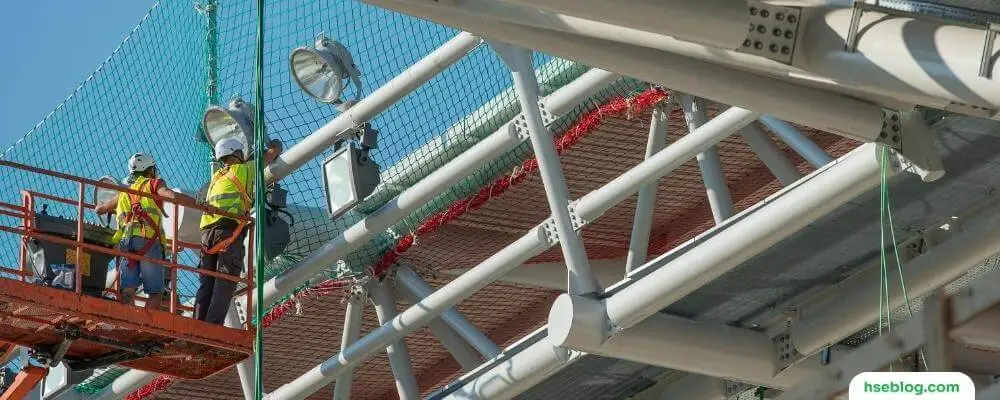
2. Unstable Working Surfaces
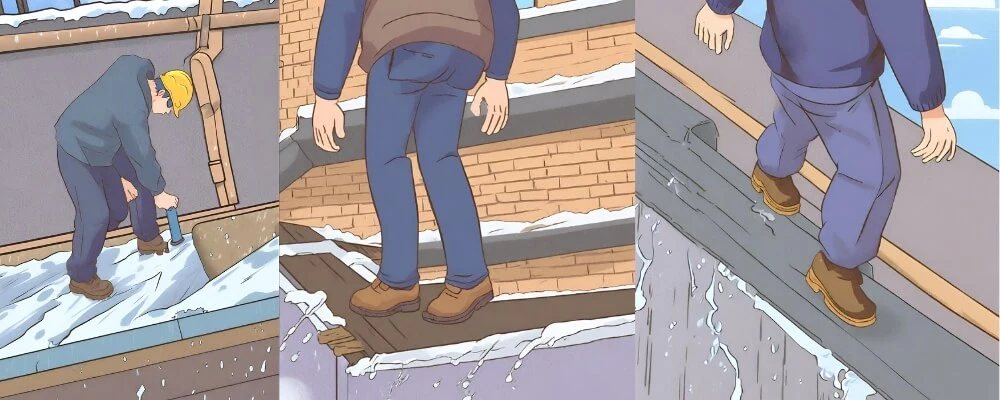
Unstable, uneven, or slippery surfaces can increase the risk of slips, trips, and falls when working at heights. The instability can be due to various factors such as weather conditions (rain, ice, snow), dirt or debris on the surfaces, structural deficiencies, or the nature of the surface material (for example, gravel roofs or loose scaffolding planks).
Workers might encounter unstable surfaces when climbing ladders, walking on roofs, working on scaffolding, or walking on platforms. Conditions can change quickly due to weather or the type of work being done, and often the change is unpredictable, making it a persistent risk that needs to be managed.
Control Measures
To mitigate the risk associated with unstable working surfaces, the following control measures can be put into place:
- Regular Surface Inspections: Frequent and thorough inspections of working surfaces can identify potential hazards before they cause accidents. This could include checking for loose materials, testing stability, or looking for signs of wear or damage.
- Slip-Resistant Materials: Work surfaces should be made of slip-resistant materials whenever possible. This can reduce the risk of slips and falls, particularly in adverse weather conditions.
- Proper Footwear: Workers should wear footwear appropriate for the conditions they will be working in. This often means shoes or boots with non-slip soles and good ankle support.
- Housekeeping: Regular cleaning and maintenance can prevent the accumulation of debris, dirt, or other materials that make surfaces slippery or unstable.
- Weather Considerations: Monitoring and responding to weather conditions is crucial. If surfaces become too dangerous due to rain, snow, or ice, it may be necessary to postpone work until conditions improve.
- Correct Equipment: For tasks involving ladders or other climbing equipment, ensure they are securely footed and regularly inspected for wear and tear.
- Training: All staff should be appropriately trained to understand the risks and preventative measures associated with working on unstable surfaces.
By implementing these measures, employers can significantly reduce the risks associated with working on unstable surfaces at heights, helping to protect their employees from potential injuries or fatalities.
3. Inadequate Edge Protection
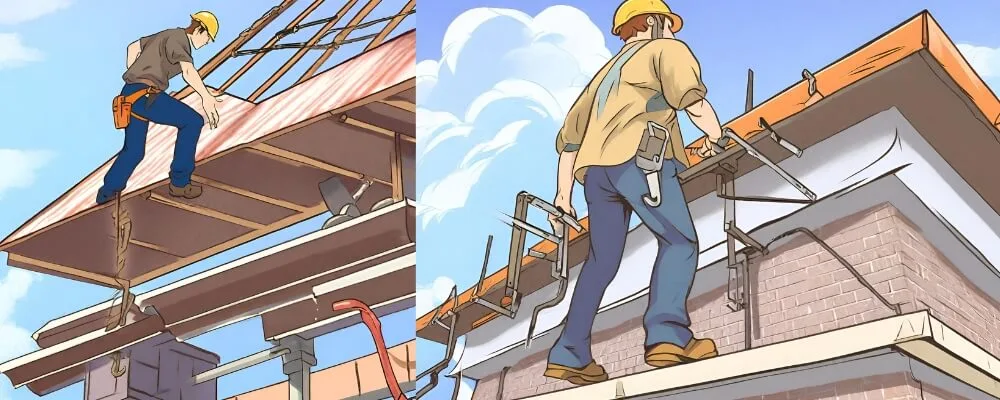
Edge protection is critical when working at heights, especially near the edges of roofs, platforms, and other elevated work surfaces. Inadequate or non-existent edge protection significantly increases the risk of falls, one of the most serious hazards when working at heights.
Edge protection might be necessary in many situations, such as when working on roofs, elevated platforms, near excavations or holes, or near any drop-off. Workers might be at risk of falling off the edge, or materials and tools might be knocked off, posing a risk to workers below.
Control Measures
Here are some control measures that can help prevent falls due to inadequate edge protection:
- Guardrails: These are barriers erected along the edge of a platform or other elevated work surface to prevent workers from falling. They usually consist of a top rail, a mid rail, and a toe board. The top rail is at about waist height, the mid rail is halfway between the top rail and the platform, and the toe board is at the platform level to prevent tools or materials from falling.
- Toe Boards: Toe boards are low barriers placed at the edge of a platform to prevent tools or other materials from being kicked or knocked off the edge. They can be used alone or as part of a guardrail system.
- Safety Netting: Safety netting can be used as an additional layer of protection. It is installed below the work area and can catch falling workers, tools, or materials.
- Fall Arrest Systems: These are systems designed to stop a fall in progress. They typically consist of a full-body harness, a lanyard, and an anchor point. Fall arrest systems should be used when other forms of edge protection are not feasible.
- Safety Monitoring Systems: A safety monitor can be used in certain situations. This competent person is assigned to watch workers and warn them when working unsafely near the edge.
- Training: Workers must be trained in safety procedures when working near edges. They need to understand the risks and the proper use of any protective equipment.
It’s important to note that these measures are not mutually exclusive. The best approach to safety will often involve a combination of these measures. The specifics will depend on the situation, including the height, the nature of the work, and the local regulations. Always conduct a thorough risk assessment and implement a comprehensive safety plan.
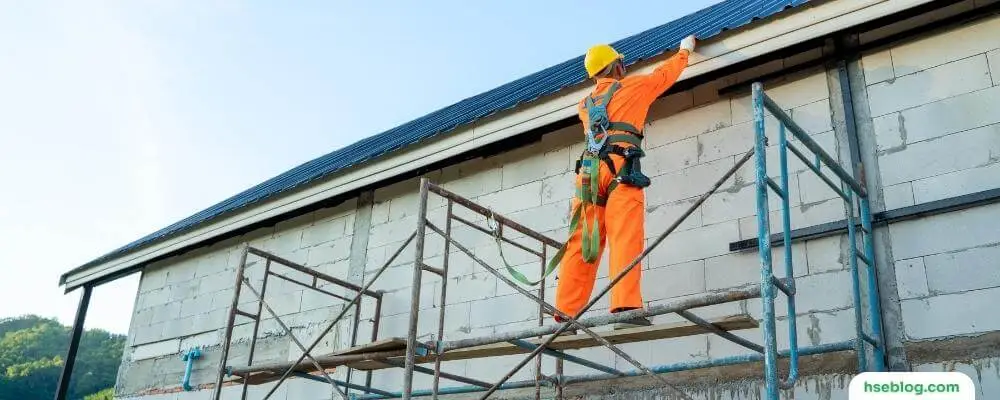
4. Falling Objects
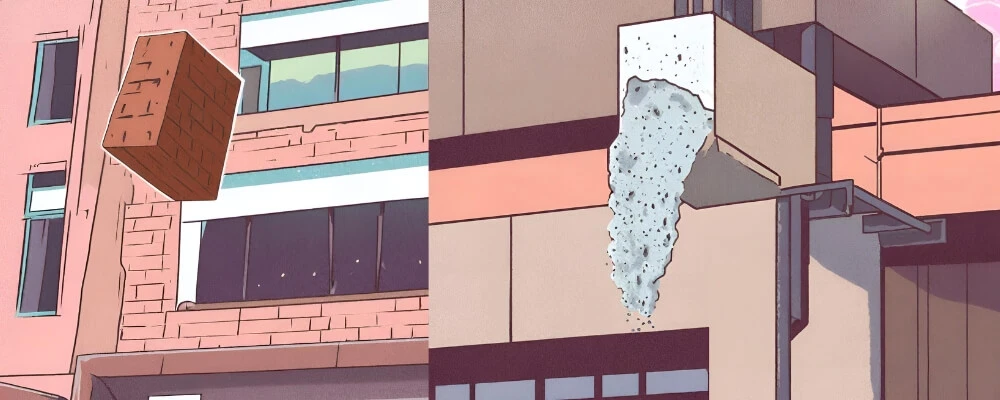
Falling objects pose a significant risk to those working at height and people working or passing below. These objects range from small hand tools to larger items like building materials. When an object falls from a height, it can gain considerable speed and force, leading to severe injuries or fatalities upon impact.
Workers could drop tools or materials from scaffolding, ladders, or elevated platforms. Also, objects can get dislodged and fall during tasks like demolition, construction, or during strong winds in outdoor environments.
Control Measures
To mitigate the risks associated with falling objects, a variety of control measures can be implemented:
- Toe Boards: Installing toe boards around the edges of an elevated platform can prevent objects from being accidentally kicked or knocked off the edge.
- Netting or Screens: Netting or screens can be installed below the work area or around the perimeter to catch falling objects. These can be particularly useful in areas where people work or walk below.
- Tool Lanyards: Tools should be secured with lanyards or other tethering devices when working at height. This prevents them from falling if they’re dropped.
- Secure Storage: Secure and organized storage of tools and materials can prevent accidental knocks. Loose materials on roofs or platforms should be minimized.
- Debris Chutes: In construction or demolition scenarios, debris chutes can safely transport materials from heights to the ground level.
- Exclusion Zones: Designated exclusion zones can be established below work at height areas. These should be clearly marked, and access should be controlled.
- Hard Hats: Hard hats should be worn in areas with a risk of falling objects. They offer protection against small objects and should be part of the Personal Protective Equipment (PPE).
- Training: Workers should be trained in safe work procedures, including the risks of falling objects and how to prevent them.
Remember, falling object risks should be considered part of a comprehensive risk assessment for work at height. The best approach often involves multiple control measures tailored to the specifics of the worksite and the tasks being performed.
5. Scaffolding Collapse

Scaffolding is a common and crucial part of many work-at-height tasks, especially in construction and maintenance. Scaffolding can collapse when poorly constructed, inadequately maintained, or overloaded, leading to serious injuries or fatalities.
Scaffolding collapse can be caused by various factors, including overloading, use of damaged or defective components, lack of bracing, unsuitable foundations, or poor construction practices. Environmental conditions such as strong winds or impact from machinery can also lead to collapse.
Control Measures
To mitigate the risk associated with scaffolding collapse, the following control measures can be implemented:
- Regular Inspections: Scaffold structures should be inspected regularly by a competent person. These inspections should occur during the installation and dismantling process and at set intervals while the scaffold is in use. After severe weather, additional inspections may be needed.
- Proper Construction and Installation: Scaffolding should be designed, erected, and dismantled by competent persons following the manufacturer’s instructions and local regulations. This includes ensuring the scaffolding is level and stable and has appropriate guardrails and toe boards.
- Load Limits: Scaffolding should never be overloaded. Workers should be aware of the weight capacity of the scaffolding and avoid exceeding it. This includes the weight of workers, tools, and materials.
- Maintenance and Repair: Damaged or defective components should be replaced immediately. Regular maintenance is crucial to ensuring the long-term stability of the scaffold structure.
- Training: Workers should be trained on safe work practices related to scaffolding, including understanding the risks associated with overloading and the importance of regular inspections.
- Proper Foundations: Scaffolding should always be erected on solid, stable ground. Mobile scaffolding should have its wheels locked to prevent movement.
- Weather Conditions: Be cautious of weather conditions destabilizing scaffolding, such as strong winds, heavy rain, or snow.
- Securing the Scaffold: Where applicable, scaffolding should be secured to the building or structure to provide additional stability.
When implemented properly, these measures can significantly reduce the risk of a scaffolding collapse and help ensure the safety of workers and others in the area.
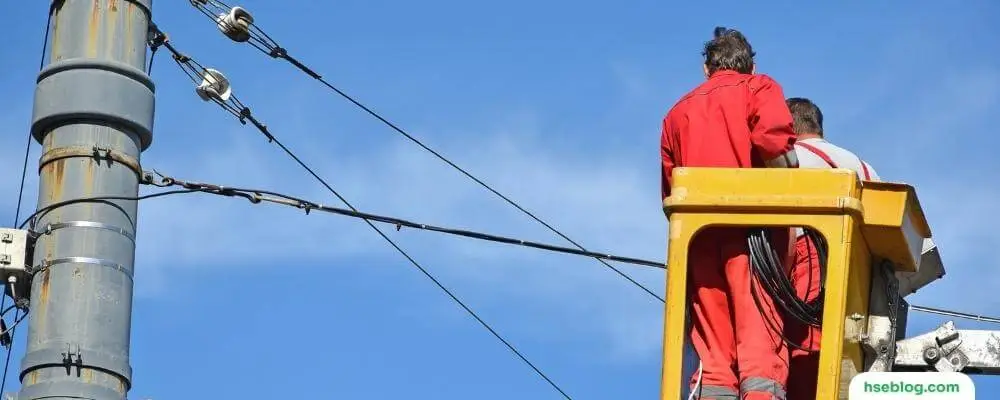
6. Failure of Lifting Equipment
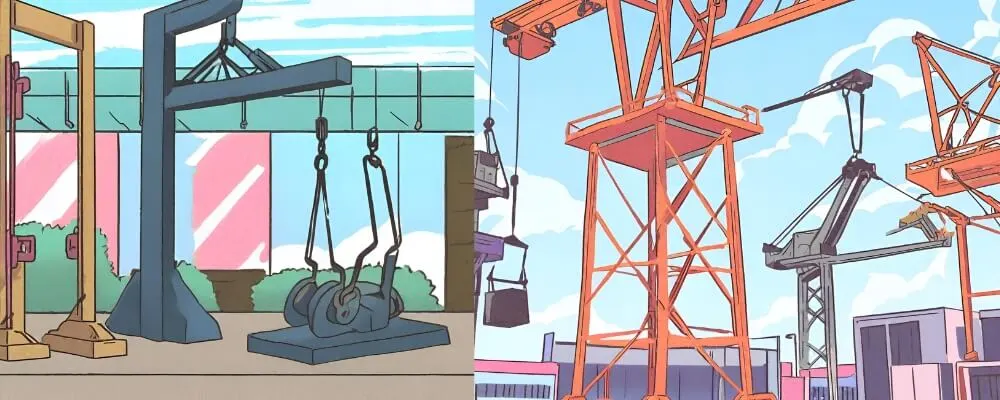
Lifting equipment, such as hoists, cranes, and lifts, is frequently used to move workers and materials to elevated work locations. If this equipment fails, it can lead to serious accidents, including falls, crushing injuries, or being struck by falling objects.
Equipment failure can result from numerous causes, such as overloading, mechanical failure, lack of maintenance, improper use, or environmental factors like strong winds.
Control Measures
To reduce the risk of lifting equipment failure, several control measures can be put into place:
- Regular Inspections: Inspections should be conducted regularly to identify any issues before they lead to failure. This includes checking for wear and tear, structural issues, or problems with the operation of the equipment.
- Preventative Maintenance: Regular preventative maintenance can prolong the life of the equipment and help prevent unexpected failures. This might include lubricating moving parts, replacing worn components, or correcting minor issues before they become major problems.
- Safe Operation Practices: Equipment should always be operated in accordance with the manufacturer’s instructions and local regulations. This includes observing speed limits, using safety devices, and following proper procedures for loading and unloading.
- Load Limits: Every piece of lifting equipment has a maximum load limit, which should never be exceeded. Overloading can cause equipment to fail, often with catastrophic results.
- Training: Operators should be properly trained in using the equipment, including understanding its limitations, how to inspect it, and what to do in case of a malfunction.
- Emergency Procedures: Clear procedures should be in place for what to do in the event of equipment failure. This can include emergency stop procedures, evacuation procedures, and who to report the failure to.
- Environment Considerations: Consider environmental factors such as wind, temperature, and ground stability, which could affect the equipment’s performance.
The goal is to prevent equipment failure before it happens. A proactive approach to safety that includes regular inspections, maintenance, proper operation, and training can significantly reduce the risk of lifting equipment failure when working at heights.
7. Poor Weather Conditions
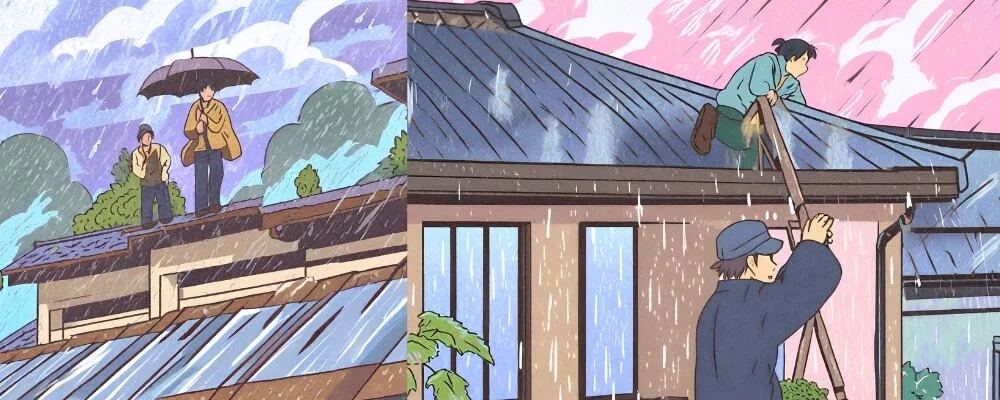
Working at heights becomes particularly hazardous during poor weather conditions. Rain, snow, or ice can make surfaces slippery, while wind can cause instability or make it difficult to handle materials. Severe hot and cold temperatures can also pose health risks to workers.
Weather conditions can change rapidly, catching workers off guard. For instance, a sudden rainstorm can make a rooftop or scaffolding slippery, or strong winds can cause a worker to lose balance or knock loose materials off an elevated work surface.
Control Measures
To mitigate the risks associated with poor weather conditions, a variety of control measures can be implemented:
- Postponing Work: The simplest and most effective way to avoid weather-related hazards is to postpone work during adverse conditions. If the weather forecast predicts unsafe conditions, consider rescheduling the work.
- Weather Monitoring: Monitor local weather reports and forecasts to stay informed about upcoming weather conditions.
- Proper Clothing and Personal Protective Equipment (PPE): Depending on the weather, workers might need waterproof clothing, insulated gear, or sun protection. Footwear should have non-slip soles to prevent slips and falls on wet or icy surfaces.
- Training: Train workers on the hazards associated with various weather conditions, how to recognize them, and what protective measures should be taken. This can help workers make informed decisions about when it is safe to work and when it isn’t.
- Safe Work Procedures: Develop work procedures that define safe working conditions, including limits on wind speeds, temperatures, and precipitation.
- Weather Protection: Provide temporary weather protection such as tents or covers to shield workers and work areas from the elements where possible.
- Regular Surface Inspection: Regularly inspect the work surfaces to ensure they are not slippery or unstable due to weather conditions.
By implementing these control measures, employers can help protect their workers from the hazards of working at heights in poor weather conditions. The primary goal should always be the safety of the workers, and sometimes, that means waiting for the weather to improve.
Also Read: Top 10 Benefits Of Safety Suggestions From Workers
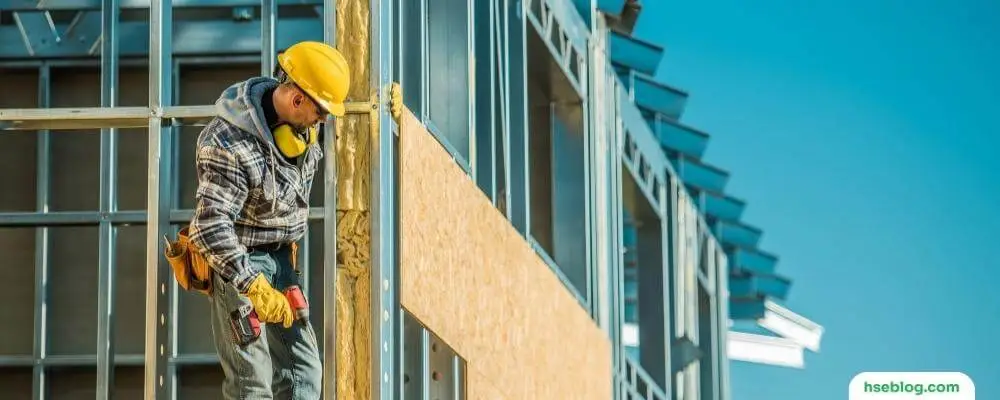
8. Lack of Training
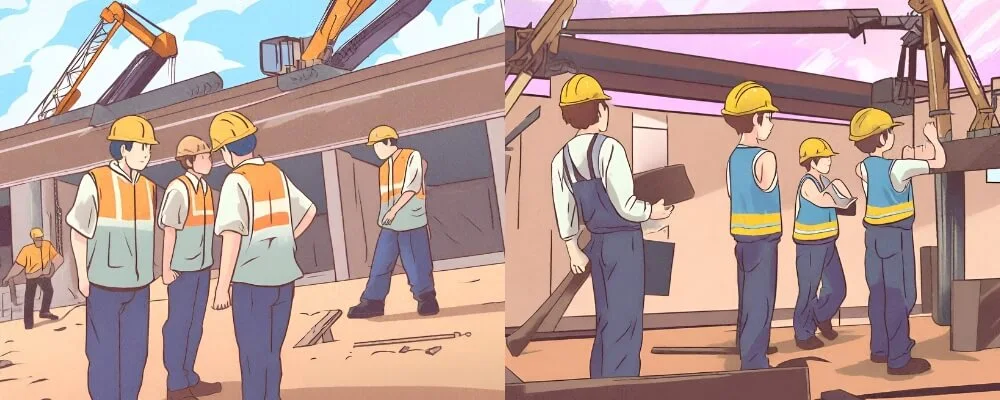
Lack of adequate training can significantly increase the risk of accidents when working at heights. Workers may not understand the risks involved, how to use safety equipment correctly, or what to do in an emergency.
Untrained or inadequately trained workers may not use personal protective equipment (PPE) correctly, could ignore safety procedures, or might not recognize potential hazards. They may also not know how to respond appropriately to changing conditions or emergencies, leading to preventable accidents or injuries.
Control Measures
To mitigate the risk associated with lack of training, the following control measures should be considered:
- Comprehensive Training: Individuals responsible for working at elevated heights should receive comprehensive working at height training. This training should cover the specific hazards, how to use all relevant equipment, including PPE and rescue equipment, and what to do in an emergency.
- Regular Refresher Courses: Regular refresher courses can ensure that workers’ knowledge is up-to-date and that they remember the correct procedures. It’s also important to provide additional training whenever new equipment is introduced, procedures are changed, or if a worker is given a new task that they’re not familiar with.
- Competency Checks: Periodic assessments or competency checks can verify that workers have understood their training and applied their knowledge correctly on the job.
- Job-specific Training: Training should be specific to the tasks workers will perform. For instance, a worker who will be operating a cherry picker needs different training than a worker who will be using a harness and lanyard.
- Safety Briefings: Conduct a safety briefing before beginning a task at height to remind workers of the hazards and safety measures. This can be especially helpful for complex or high-risk tasks.
- Create a Culture of Safety: Encourage workers to speak up if they see unsafe behavior and to ask questions if they’re unsure about something. This can help create a culture where safety is prioritized.
Remember, the training aims to comply with regulations and ensure that all workers have the knowledge and skills to perform their tasks safely. Regular training helps workers understand the risks and how to protect themselves and their co-workers.
9. Improper Use of Equipment

The misuse or improper use of equipment is a common cause of accidents when working at heights. This could include using equipment for a purpose it wasn’t designed for, not using safety equipment correctly, or not maintaining equipment properly.
For example, workers might use a too-short ladder, leading them to overreach or stand on the top rung. Another worker might not secure their harness correctly, reducing its effectiveness in case of a fall. Or, workers might not store equipment properly, leading to wear and tear or damage that makes it unsafe to use.
Control Measures
To mitigate the risk associated with improper use of equipment, the following control measures should be considered:
- Proper Training: Workers should receive comprehensive training on how to use all equipment safely and correctly. This should include how to use and inspect the equipment for damage, properly storing it, and what not to do.
- Regular Supervision: Regular supervision can ensure that workers are using equipment correctly. Supervisors can correct improper usage on the spot and identify any training gaps that must be addressed.
- Enforcement of Safe Use Practices: Safe practices should be clearly communicated and consistently enforced. Workers should understand the potential consequences of misusing equipment in terms of their safety and any disciplinary action that might be taken.
- Clear Instructions and Signage: Clear, easy-to-understand instructions should be provided for all equipment, and warning signs or labels should be used where appropriate.
- Regular Equipment Checks: Regular inspections can identify any damage or issues that could make the equipment unsafe. Any equipment that isn’t in good working order should be taken out of service until it can be repaired or replaced.
- Provision of Appropriate Equipment: Providing the right equipment for the job can reduce the temptation to misuse equipment. For instance, if workers often find that the ladders provided are too short for the task, they might be tempted to overreach or to stand on the top rung, both of which are unsafe practices.
Remember, these measures ensure that all workers use equipment safely and correctly. Regular training, supervision, and enforcement of safe practices are key to achieving this goal.
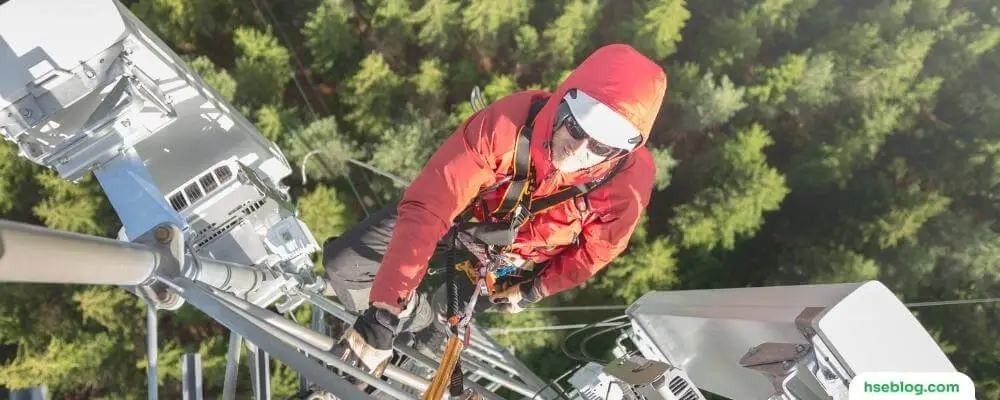
10. Lack of Personal Protective Equipment (PPE)

Personal Protective Equipment (PPE) is crucial in worker safety when working at heights. Without the proper PPE, workers are at a heightened risk of injury from falls, falling objects, and other hazards.
A worker might fall from an elevated surface if they’re not using a proper harness. They might be struck by a falling object if they’re not wearing a hard hat. They could also slip and fall if they’re not wearing appropriate non-slip footwear.
Control Measures
To mitigate the risk associated with a lack of PPE, several control measures can be taken:
- Providing Appropriate PPE: Employers should provide all necessary PPE for working at heights. This might include fall protection equipment (such as harnesses, lanyards, and anchor points), hard hats, safety glasses, gloves, and non-slip footwear.
- Training in PPE Use: Simply providing PPE isn’t enough – workers need to be trained to use it correctly. This includes how to wear it, how to adjust it, how to inspect it for damage, and how to clean and store it.
- Regular Inspection and Maintenance of PPE: PPE should be inspected regularly to ensure it’s in good working order. Any damaged or defective PPE should be replaced immediately.
- Enforcement of PPE Use: Employers should always enforce the use of PPE. This might involve regular checks, disciplinary measures for non-compliance, and fostering a culture where wearing PPE is seen as the norm.
- Adaptation to Changing Conditions: PPE requirements might change based on the work conditions. For example, workers might need additional PPE like rain gear or non-slip footwear if work is done in rainy conditions.
Remember, PPE is often the last line of defense against workplace hazards. Employers can significantly reduce the risk of injuries when working at heights by providing appropriate PPE, training workers in its use, and ensuring its use.
Additional Working At Height Hazards
- Poor Conceptual Design Of The Permanent Works
- Poor structural design
- Poor functional design
- Inadequate planning and provision of weather
- Structural elements incorrectly erected or installed.
- Poor (or perhaps no) workplace design
- Signaling systems (manual, mechanical, electronic) malfunction
- Misuse (elements and equipment not used as designed or planned)
- Unprotected edges and openings
- Loads insecurely attached
- Release of pressure (concrete pumps)
- Poor mechanical design (breaks in use, not powerful enough, components fracture or malfunction)
- Poor functional design (not adequately designed for the stated purpose)
- Poor workplace design
- Signaling systems (manual, mechanical, electronic) malfunction
- Misuse (not used as designed)
- Loads insecurely attached
- Release of pressure (concrete pumps)
- Poor maintenance (breaks or emits noxious gases)
Conclusion
In conclusion, working at heights can present numerous risks, but proactively identifying hazards and implementing appropriate control measures can significantly mitigate these risks. Whether it’s preventing falls from heights, addressing unstable working surfaces, ensuring the safety of lifting equipment, or any other of the hazards we’ve outlined, it is critical that employers are diligent in their efforts to ensure worker safety.
Ensuring comprehensive training, the correct use of Personal Protective Equipment (PPE), and consistent adherence to safety regulations is crucial. Regular safety inspections and maintenance routines should be part of any work that involves working at heights.
While this blog post has outlined 10 common hazards and their control measures, it is not exhaustive. Each workplace is unique, and the specific hazards and necessary control measures can vary. It’s, therefore, essential to conduct regular, thorough risk assessments tailored to your specific situation.
Remember, safety should always be a priority. These measures can prevent accidents, save lives, and create a safer and more productive working environment. After all, the key to effective workplace safety when working at heights is a combination of vigilance, education, and a commitment to a safety culture.

